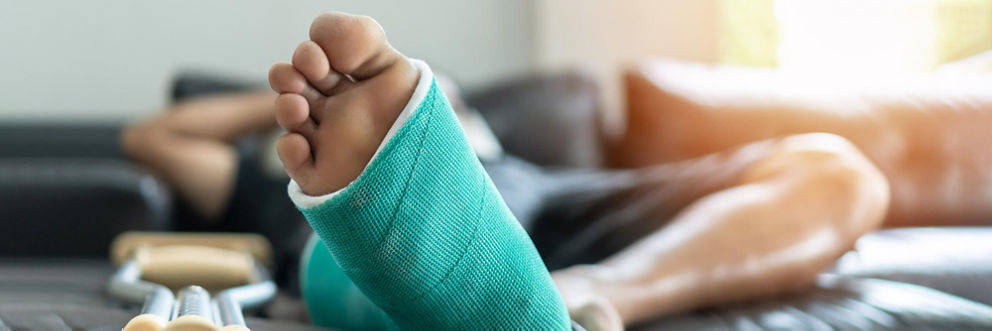Fractures and trauma
Care for fractures and orthopedic trauma
Whether you’ve fallen off your bike or been checked against the boards, almost everyone has experienced an accidental injury. And when you hear a snapping sound or feel a sharp pain, it may mean a broken bone. Over six million Americans deal with fractures every year, and being seen quickly after the injury is important. Seeking care right away can help manage pain and set you on the road to recovery more quickly.
At TRIA, our team of orthopedists and
"[My doctor] and her team were phenomenal throughout my broken ankle journey – surgery and follow-up care. They educated me and put me at ease every step of the way. They took the time to listen and guided me through questions about both medical and emotional side of things. I trusted their care and am thankful for the peace of mind they brought me. Amazing!"
Types of fractures and orthopedic trauma we treat
We treat all types of broken bones and sports injuries anywhere in the body, including:
- Typical fractures and fractures that break through the skin (compound fractures)
- Dislocations
- Fractures that have healed in a bad position or are having difficulty healing (malunions and nonunions)
Spinal fractures
Concussions and follow-up care- Sports hernias
- Stress fractures
Sprains and strains
Why visit orthopedic urgent care
After a painful injury, waiting for an appointment isn’t always an option. You can stop in at any of our
We have the only orthopedic urgent care clinics in the Twin Cities that are staffed with board-certified, fellowship-trained doctors. When you have an injury that needs immediate attention, we can get you the orthopedic and sports medicine care you need under one roof, including splinting and casting, imaging tests,
Accidents can happen at any time. If you need help with an injury when our orthopedic urgent care clinics are closed, we can take care of you at one of
What are symptoms of a fracture?
Common symptoms of a fracture include:
- A pop or snap reported at the time of injury
- Decreased range of motion
- Difficulty or inability to move or bear weight on an injured limb
- Persistent or severe pain, swelling and/or bruising
- Visible deformity
- Weakness or numbness in the injured body part
Treating fractures and orthopedic trauma
When you need help with an unexpected injury, we’ll work with you to create a personalized treatment plan. We may recommend one of the following treatments:
Splint or brace
Even though braces and splints limit motion of the injured area, you’re still able to move other parts of the limb while wearing them. And unlike wearing a cast, it’s usually okay to do some load-bearing activities.
Splints are generally not removable, but braces may be. A brace can be worn throughout the entire day and night, or during specific activities. The length of time you’ll wear a brace or splint varies depending on your injury.
Casting
When you think of treating a broken bone, you probably think of a cast. A cast is a hard shell made of plaster or fiberglass that supports the bone in order to keep it still and protect it from further injury.
Before the broken bone is covered with a cast, an orthopedist may set it to make sure it heals correctly. Casts normally stay on for four to 12 weeks, during which time you may need additional X-rays or other imaging tests. When your cast is ready to come off, it will need to be removed by a medical professional.
Surgery
We use
Our orthopedic surgeons will determine the most effective way to surgically support your bone if surgery is needed. At TRIA, we’ll guide you toward surgery only when it’s the most effective treatment for you.
